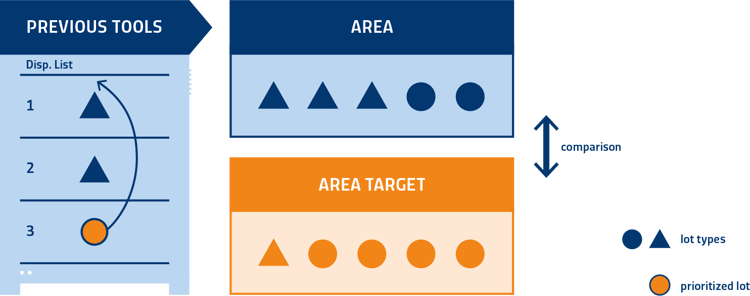Jim Connett, on April 18, 2019, 02:26 PM
Dispatching: Line Balancing Using Inventory Ratios
A balanced, smooth-running production line is the goal of manufacturing sites around the world. Most will agree that line balancing is sometimes elusive and often influenced by any number of forces that can derail even the best managerial efforts. When a tire is out of balance on a car, the occupants feel the vibrations throughout the car, and the driver has more difficult time keeping the car in the lane. The only fix is to take the car to the tire store, remove the tire from the car and rebalance it. This takes time and, in some cases, money. Rebalancing a manufacturing line takes time and money, too…a lot more time and a lot more money. Today, I’d like to present an idea that may help keep things moving smoothly through your manufacturing line.
Line Balancing Defined
Line balancing is defined as the “problem of assigning various tasks to workstations while optimizing one or more objectives without violating any restrictions imposed on the line.”1 The goal is to get the right material in front of the right tool at the right time. We want to maximize the capabilities of the tool, assure quality, and keep throughput at a high level, while minimizing the impact of any number of constraints placed on a given product or tool. If successful, we take significant steps forward to minimize the effects of bottlenecks (more material arrives at a given step than can be processed) and prevent starvation (when a tool has no material to process). Both are disruptive and both take time to resolve correctly. Managing these two extremes is important.
A New Way of Thinking
We considered how a critical-ratio-type concept could help create and maintain a balanced line by identifying inventory targets within a manufacturing line, and not only defining these targets, but pulling lots in to meet these targets. Critical ratio is the number of time units remaining in the process (to completion) divided by the number of time units until the due date. If the result is 1, then the product (and the process) is exactly on time, and the finished product will meet the due date. What if the “due date” was actually a point (or points) in the line with defined inventory levels…rather than a single point at the end of the process? What if there was a way to use the same critical ratio concept to keep lines balanced while the material is in process?
Painting a Mental Picture
Imagine a manufacturing line where the area at the final step can process a variety of material, and the goal for that area is to always have a defined inventory of material. That area contains tools with dispatch lists of material available to run right now.
Upstream (several steps prior to the final processing step), we also have tools with dispatch lists of material ready to run. In most cases, operators select material to run from the top of the list at a given tool. This may or may not be the best choice of material to process considering we are trying to maintain a specific inventory level downstream at the final processing area, and we certainly can’t expect upstream operators to know downstream requirements. By establishing a target inventory level for the final step and using an automated system to calculate the critical ratios at that step, we can determine if:
- we currently have the inventory level required (CR=1)
- we have too much inventory (CR>1)
- we have too little inventory and need more (CR<1)

Based on these results, we can then dynamically arrange the material in the dispatch list upstream such that the operator will see the most urgent material to run that satisfies inventory requirements in the final processing area. And, by prioritizing material upstream and moving it to the top of the dispatch list at upstream tools, we also (indirectly) deprioritize other, lower priority material by presenting it further down the dispatch list. Effectively, we’re able to pull the correct material into the final processing area by moving that material higher on the upstream dispatch lists and push back on the material we don’t need by moving that material lower on the same upstream dispatch lists.  functions exactly as described above so that you are sure the upstream operator is selecting the right material on the right tool at the right time to properly feed downstream tool requirements.
functions exactly as described above so that you are sure the upstream operator is selecting the right material on the right tool at the right time to properly feed downstream tool requirements.
Dispatching Demonstration: Inventory Controls
Conclusion
While inventory ratio alone is not enough to perfectly balance the line, setting these strategic and targeted inventory levels and then responding with dispatched material to meet these targets is yet another option for managers and capacity planners in their effort to help ensure the material selected to process at upstream steps meets inventory level goals at downstream steps.
More information about event-driven dispatching concepts can be found here.
1 Line Balancing Techniques To Improve Productivity Using Work Sharing Method
Be the first to comment.